Cause:
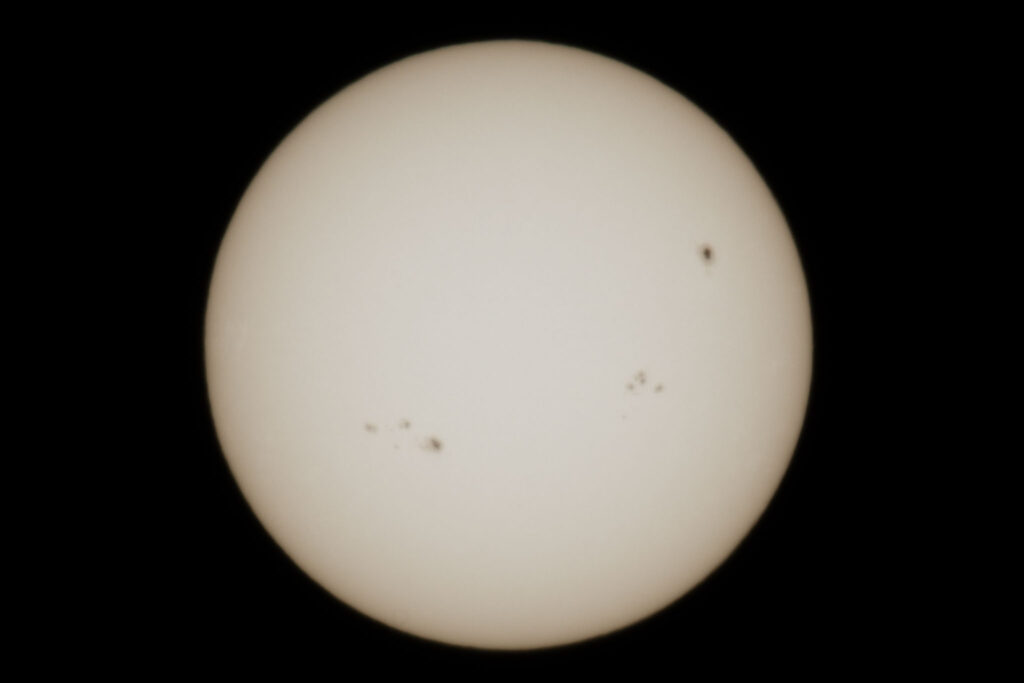
Effect:
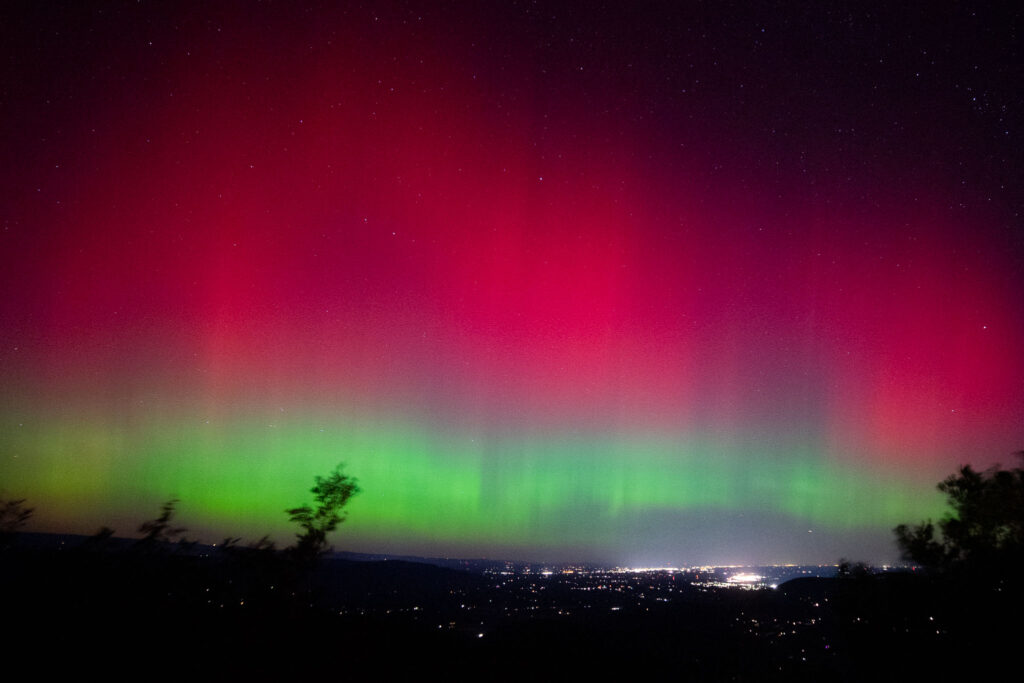
More Effect:
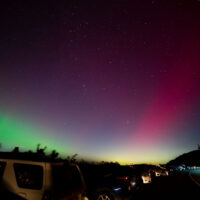
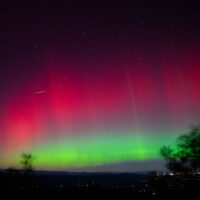
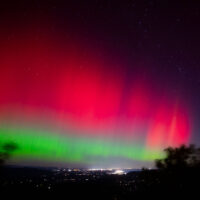
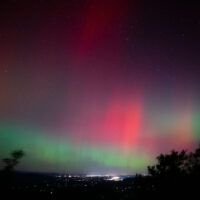
Details
On October 8, 2024, the Sun sent a fairly large coronal mass ejection (CME) toward Earth. It came from a solar flare associated with the sunspot visible toward the top-right of the “Cause” photo above. I took that photo days later, after the sunspot had rotated out of alignment with Earth.
According to the U.S. Space Weather Prediction Center (SWPC), the matter and energy from the CME started hitting our atmosphere at 11:15 a.m. on October 10. It was traveling about 1.5 million miles-per-hour. SWPC predicted that the Earth would be subject to G3, G4, and possibly even G5-level solar storm intensities until the CME passed. Here in northern Virginia, the aurora borealis (northern lights) can be visible at night, if atmospheric conditions permit, at G4 levels.
I had never seen the aurora before. It’s sort-of a “running gag” that any time anything interesting happens in the sky over the D.C. metro area, it’ll be invisible due to clouds, light pollution, locusts, chemtrails, hemoglobin-eating gas creatures, nuclear mushroom clouds, man storms, chemical irritants, COVID vapor, snipers, or some other unlikely condition. For once that didn’t happen. The skies were clear, and looked like they’d stay that way.
We drove out to the Hogback Overlook at mile 20.8 on Skyline Drive in Shenandoah National Park to see what we could see . . . and it was spectacular. The storm ranged between G3 and a high G4 while we were there. Most of the time it was faint, but super easy to see with a camera or even just a smartphone. But when it peaked up in that high G4 range, you could really see it. You just had to look up. Wow.
Solar photo shot with:
Sony α6600
Tokina SZX 400mm Reflex MF f/8
Tokina 2x Teleconverter
Tiffen Solar ND Filter (4.8, 16-stop)
Aurora photos shot with:
Sony α7 II
Samyang MF 14mm f/2.8 Mk2
Processed in:
Adobe Lightroom

